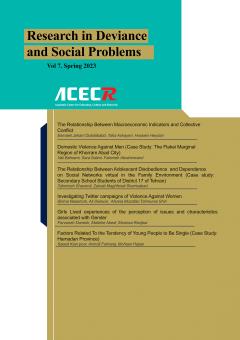-
-
-
Open Access Article
1 - Examining the Cohabitation Status in Iran: a Synthesis of Cohabitation Researches
Mohammadjavad ChitsazThe sexual revolution of the late 1960s led to a change in sexual discourse and a fundamental change in sexual attitudes, ethics and behavior in many western countries. One of the most important consequences has been the expansion of premarital sexual relations in these MoreThe sexual revolution of the late 1960s led to a change in sexual discourse and a fundamental change in sexual attitudes, ethics and behavior in many western countries. One of the most important consequences has been the expansion of premarital sexual relations in these countries. This pattern of premarital sexual relations gradually spread to other parts of the world. This transformation demythologized sexual relations and, in addition to increasing the age of marriage, created the grounds for the emergence of cohabitation. Islamic Iran has not been spared from these changes and nearly in the two decades, there have been whispers of the prevalence of this marriage model in Iran that result provoked researches with qualitative method in general. The present article aimed to better understand this phenomenon and illustrate a general picture of cohabitation status in Iran by combining the studies with qualitative method. Ultra-combination method applied in this study. In most important Persian database during years 2001-2021 limit searched key words cohabitation, housemate, coexistence, and white marriage. Out of collection of articles, only 14 papers were found that matched to entrance criterion. Cohabitation in Iran popularized among urban middle classes, young age groups and university graduates. World experiences indicates increase the phenomenon. Due to illegal and severe punishment in Iran,, there is not information about of its amount; But survey attitude data obtained by national survey in 2011th decade indicate there is an increase compliance with phenomenon at the attitude level. In the analysis of this phenomenon, it is necessary to pay attention to different types of coexistence. We are faced with at least two types of cohabitation; first type can be classified mostly in the form of a type of premarital relationship model, and in the second type, cohabitation is considered as an alternative to marriage. Manuscript profile
List of Articles Mohammadjavad Chitsaz
-
The rights to this website are owned by the Raimag Press Management System.
Copyright © 2017-2024

